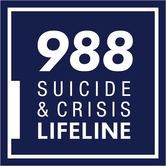Published October 2022
October is National Bullying Prevention Month
With schools back in session, October is a great time to raise awareness about bullying. Bullying is unwanted, aggressive behavior among school-aged children that involves a real or perceived power imbalance. Bullying can also take place online. Cyberbullying can include mean text messages or emails, rumors sent by emails or posted on social media, and embarrassing pictures, videos, websites, or fake profiles.
Bullying can happen wherever young people spend their time, and everyone has a role to play in bullying prevention:
- Teachers, administrators, and other school staff can establish a safe school environment, train students to prevent and address bullying, and learn how to engage parents and youth in building positive school climates.
- StopBullying.gov’s Community Action Planning Toolkit explains how youth-serving professionals (e.g., mental health service providers, community or youth organizations) can host an anti-bullying event or develop a strategy for bullying prevention in their organization.
- If parents know or suspect their teen is bullying or being bullied, StopBullying.gov has several resources to help. Specifically, parents can learn how to recognize the warning signs and use these tips and tools to talk to teens about bullying.
Explore StopBullying.gov’s videos and social media posts and share them with your networks.
Domestic Violence Awareness Month
October is also Domestic Violence Awareness Month. In the United States:
- More than 10 million adults experience domestic violence annually.
- One in four women and one in 10 men experience sexual violence, physical violence, and/or stalking by an intimate partner during their lifetime.
Domestic violence is common in every community and affects all people. The National Coalition Against Domestic Violence has resources and information for survivors, advocates, and allies.
During adolescence, young people learn how to form safe and healthy relationships with friends, parents, caregivers, teachers, and romantic partners. Knowing how to establish and maintain healthy romantic relationships can help adolescents develop into adults with healthy adult relationships. OPA has resources on healthy relationships in adolescence and how to talk to teens about relationships.
988 Suicide and Crisis Lifeline
|
Anyone in the United States can now dial “988” directly to reach the existing National Suicide Prevention Lifeline. People experiencing thoughts of suicide, mental health or substance use crisis, or any other kind of emotional distress can call (multiple languages), text or chat (English only) the new three-digit number to connect with compassionate, accessible care, and support. 988 can also be used if someone is worried about a loved one who may need crisis support. The Lifeline Chat feature can still be accessed directly from the Lifeline’s website. Learn more about the Substance Abuse and Mental Health Services Administration’s 988 Suicide and Crisis Lifeline. |
Spread the Word with These Posts
- This #NationalBullyingPreventionMonth, learn about how to talk to teens about #HealthyRelationships from @HHSPopAffairs. https://opa.hhs.gov/adolescent-health/healthy-relationships-adolescence/talking-teens-about-relationships
- If you or someone you know is having thoughts of suicide or experience a #MentalHealth or substance use crisis, @988Lifeline provides 24/7 connection to confidential support. https://988lifeline.org/
 An official website of the United States government
An official website of the United States government

